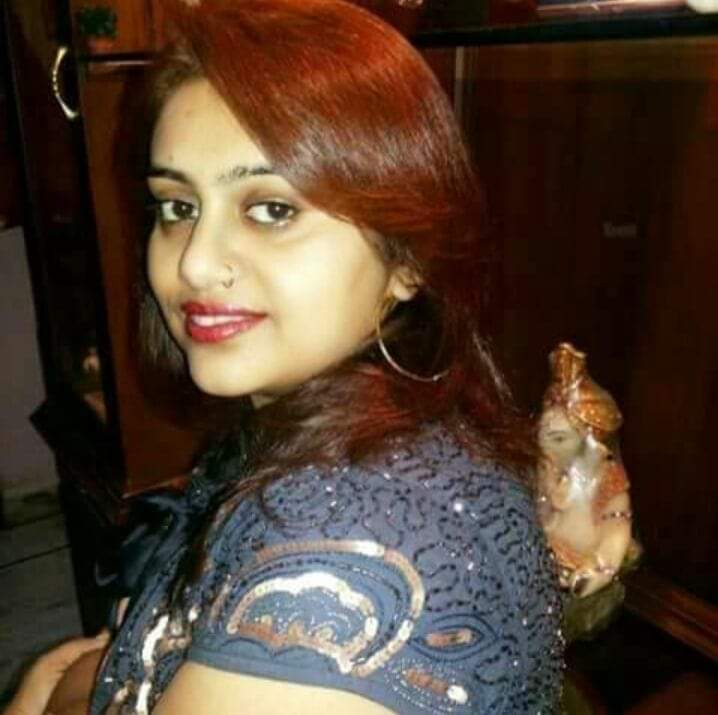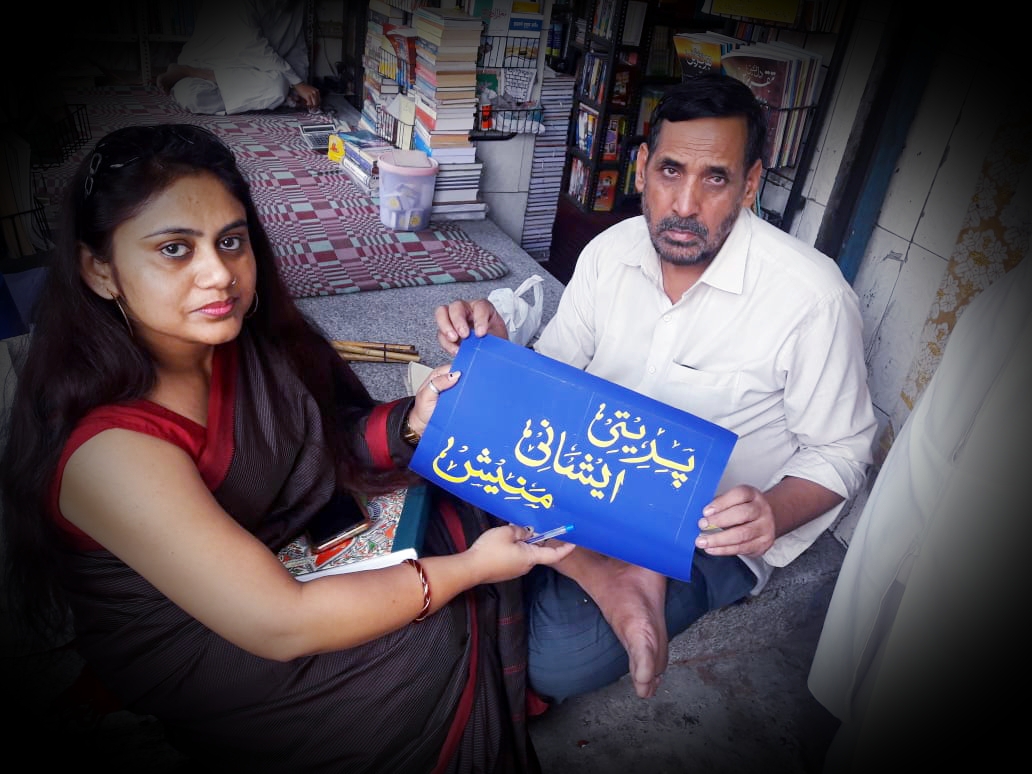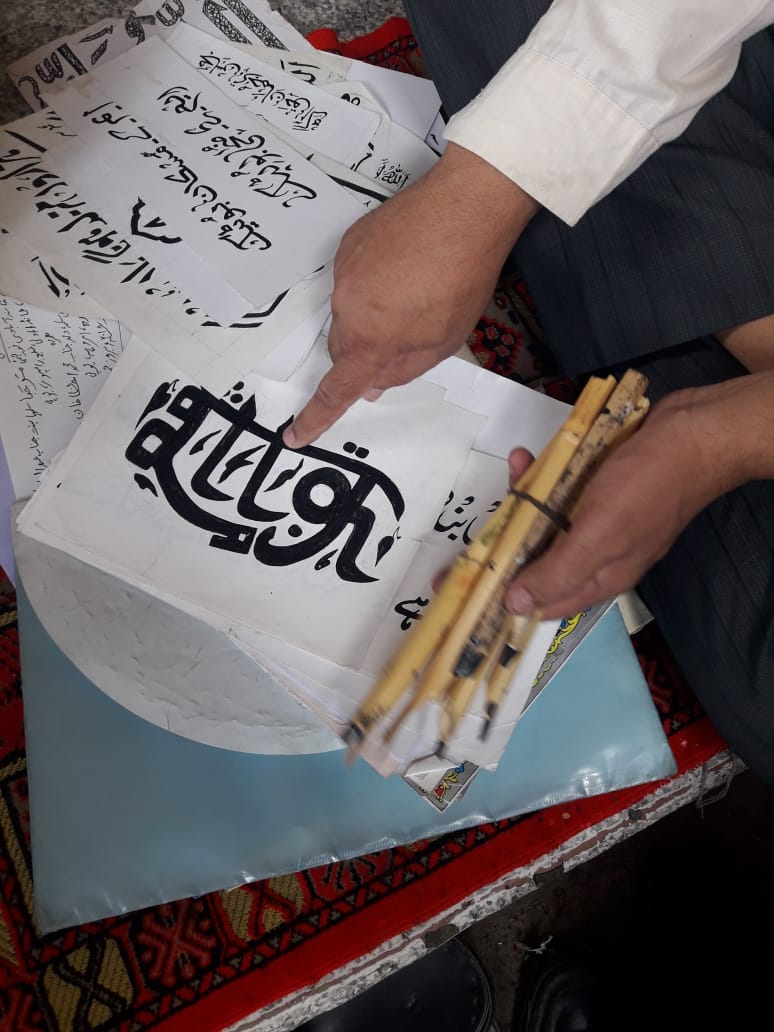In this computer era, the traditional skill of Calligraphy is fast slipping to oblivion
Mohammad Ghalib, one of the few remaining calligraphic artists, sits in a corner in an old bookstore in the Urdu Bazaar, Delhi-6. He says he is destined to see his art meet a sad end


I have always been drawn towards the fading arts, practices and disciplines. A disturbing thought taints my mind. Will it be possible to recall them if they are not preserved with care, interest, seriousness?
Would we be able to save them? Will our future generations be able to experience them or they’d be relegated to some odd chapter in the history books or a subject of search on Google — these which suffer our apathy.
Calligraphy is that art of writing in which the letters are made meaningful skillfully using pictorial style in a systematic manner. Mahabharata-era manuscripts and Mughal-era documents display amply the antiquity of these skills.
In the current age of computers, this skill has few takers. These arts have gradually been restricted and buried within the folios. So, let’s get acquainted with one of the masters of this art of calligraphy. He is one of the few remaining calligraphic artists or katab and his name is Mohammad Ghalib. He is also called ‘Katib Ghalib’ by the local people.
Once when I’d been to meet him, his shop was closed. Disappointed when I phoned him, I found out that since someone was sick in his house, he was unable to come and see me where I waited for him. His home at Okhla was at a great distance too. So, on one Thursday, I set out on a bus-ride to Urdu Bazaar, Delhi-6, yet again, to meet up with him as on Friday he would have been busy.

I reached his shop at the appointed hour and spent about two hours talking to him. The time with Mohammad Ghalib Sahib seemed to have wrapped itself around his craft that day.
I went through his work, heard numerous couplets written in Urdu and Arabic. I also learnt about his efforts, interest and education for this art, his challenges of livelihood and his compulsions, his conditions, and also his personal life. I also acquainted myself of the traditional pens, tools, nibs, pens and inks used in this art. We also discussed the future of calligraphy art. My interest was imprisoned in a few questions … I have asked and set it free.
On inspecting his shop, the list of my questions had changed places. It’s not a shop really but an odd corner in an old bookstore in the Urdu Bazaar, accorded to him for his bag and other things, a stool, and seating for two.
How many years have you spent serving this craft?
I do not remember exactly how many years. However, time had forced me out of my village, after school and pushed me to this city to earn. So, I can tell that I have given 38 years of my life to this city.
Where are you from, and from where have you studied?
I am from Alipur, near Saharanpur, in Uttar Pradesh. Whatever I have studied, it was at the Islamic madrassa ‘Darul Uloom Devwan, Saharanpur”. I also learnt the art of calligraphy there. I could not further my education due to family conditions.
Was calligraphy a hobby or a passion with you?
I had learnt it to earn my daily bread. I did this because it is an honourable work related to the ilm and keeps me in contact with educated people and deepens my bond with people who understand literature. It became a passion later.

Does this work provide you well? Are you satisfied?
It was a meaningful employment before the computer. From offices to newspapers, I used to get work from everywhere and we used to do it in every possible way. At that time, this art was needed by the people. However, it took too long to write in it.
Books were written in Urdu and newspapers also needed katibs, we were in demand — calligraphy is an art which very few people can master. The art is now choking due to the revolution of electronic gadgets.
Do you write it in some special way and with certain tools?
We even have a special way of sitting, when we are doing calligraphy. We have to take extra care while writing for the newspapers. We were taught that we would be able to learn only when we sit in a particular way. And not only that, we even had to be master certain other skills.
Not only that we have to hold our breath while writing so that our hands don’t shake. I am now 58, and it is not easy for me anymore. Time has changed, the new generation does not want to adopt “calligraphy” commercially. Like other ancient practices, this art is also becoming extinct due to advances in technology.
Who is in your family?
My Begum (wife), a daughter and a son. I have married the daughter after educating her adequately.
Does your son know this art? Has he also learned these skills from you?
What are you saying! Why would the generation of today want to learn this skill! He is not doing anything at the moment, he left his job some time ago. He does minor repair work to earn bare minimum.
These tools from your bag range from zero-point brush to number three, and these old nibbed pens. Are all these used by you? Where do you source them from?
For this traditional art, certain special pens are used, which we make ourselves. We sharpen them with the blade and prepare according to different letters. Nowadays, the variety of brushes available has made the job a little easy. Chart paper sheets and handmade papers, common and metallic colours of camels, they have brought ease with variety. In olden times, a few natural colours inks were prepared and used in writing.

How much work do you get nowadays?
I sit idle for many days before someone from Jamia or some research students from the university come, or someone comes for hobby to get the names or advertisements written. And a few people like you who are eager to know. Now my hands tremble, and my eyes too are unable to focus keenly due to old age.
What is the future of this art and employment that it provides?
The new generation does not want to adopt this traditional art, because it is no longer enough to provide for them. The handiwork is now over, there is no employment in it. I am destined to see my art meet a sad end.
Hearing all the above things, I felt gravel disturbed and had an urge to save this art by learning it like all other skill that I have acquired. Fading hand workmanship! But distance from that place and other responsibilities prove a deterrent. Well, where there is a will there is a way.
In the shop, he showed me a lot of books in which were kept books of Hindi shayari alongside the same book in Urdu and Arabic and Roman. I also gathered information on the use of the Urdu translation. Finally, he wrote my daughter and Swami Ji’s name in calligraphy, as a souvenir. He had said that the name ‘Preeti’ will appear very small in urdu. So, Mohammad Saheb proposed to write the name in Arabic.
With fond remembrance, it has been framed and displayed in my living room.

